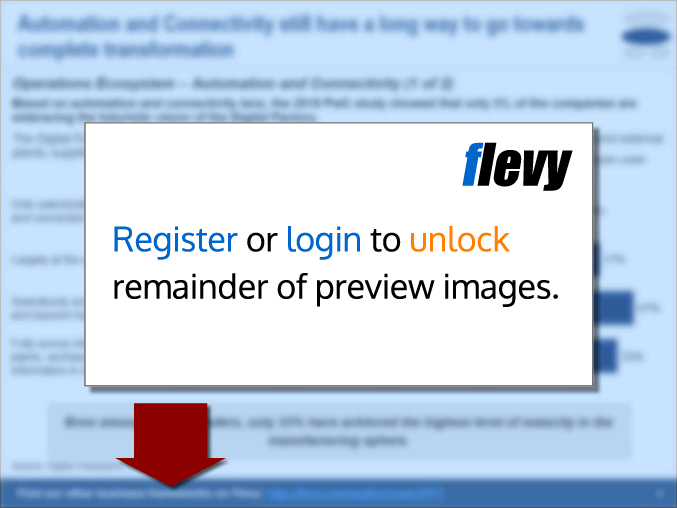Business Model Diversification (PowerPoint PPTX Slide Deck)
PowerPoint (PPTX) 29 Slides FlevyPro Document
BUSINESS MODEL INNOVATION PPT DESCRIPTION
To strategic objectives for all businesses are to propel growth and performance, while simultaneously creating value for customers.
While it is customary for managers to emphasize financial performance, effective managers pursue new opportunities in order to create added value. Business Model Diversification allows creation of value, if managed astutely, and can aid managers enhance performance and expand the goal of the enterprise.
The following 8 steps can be taken by managers to analyze their current Business Model portfolios to optimize them:
1. Identify Business Models
2. Identify Key Resources
3. Identify Key Capabilities
4. Identify Key Performance Indicators (KPIs)
5. Connect Model to Resources & Capabilities
6. Identify Interconnected Resources & Capabilities
7. Analyze
8. Monitor & Maintain
The framework also discusses 3 key questions, which were the basis of the framework that looked a multitude of organizations for analysis of their Business Models.
The study used the above 8 steps to analyze the Business Models of all the businesses.
The slide deck also includes some slide templates for you to use in your own business presentations.
This presentation offers a blueprint for understanding the core elements of a business model: Customer Value Proposition, Profit Formula, Key Resources, and Key Processes. By breaking down these components, managers can pinpoint how to deliver value effectively and ensure profitability. The visual tools included in the deck help map out significant connections among business models, making it easier to identify areas for improvement and growth.
The PPT also delves into the strategic considerations for assessing and optimizing new business models for inclusion in a portfolio. Managers are guided through a structured approach to evaluate potential synergies and resource sharing opportunities. This framework is essential for executives looking to refine their business strategies and achieve sustainable growth.
Got a question about the product? Email us at flevypro@flevy.com.
Source: Best Practices in Business Model Innovation, Business Model PowerPoint Slides: Business Model Diversification PowerPoint (PPTX) Presentation Slide Deck, LearnPPT Consulting
BUSINESS MODEL INNOVATION PPT SLIDES
Did you need more documents?
Consider a FlevyPro subscription from $39/month. View plans here.
For $10.00 more, you can download this document plus 2 more FlevyPro documents. That's just $13 each.










